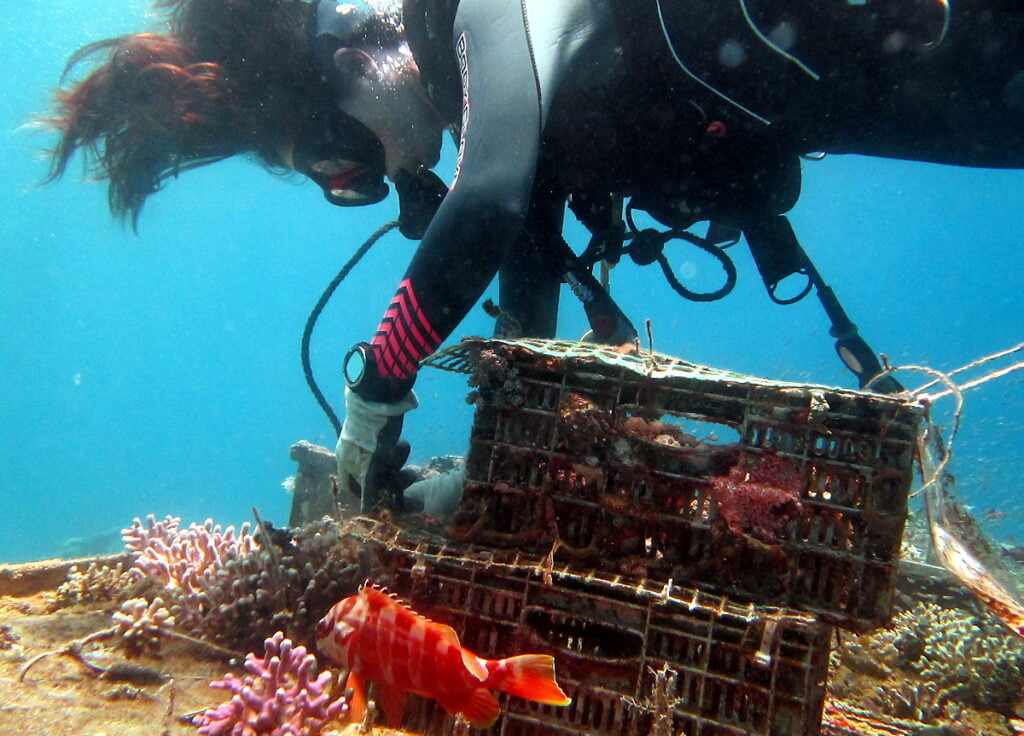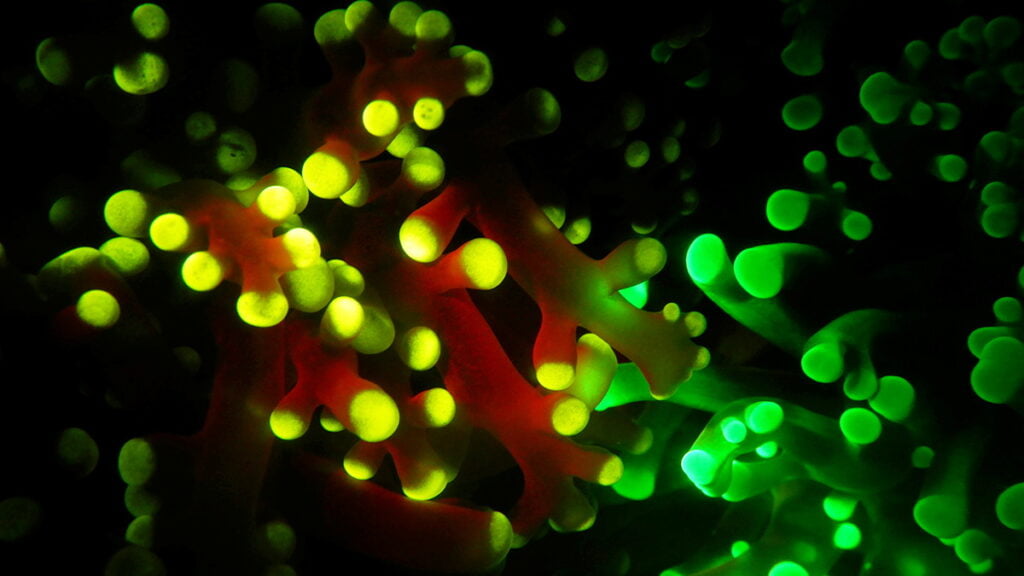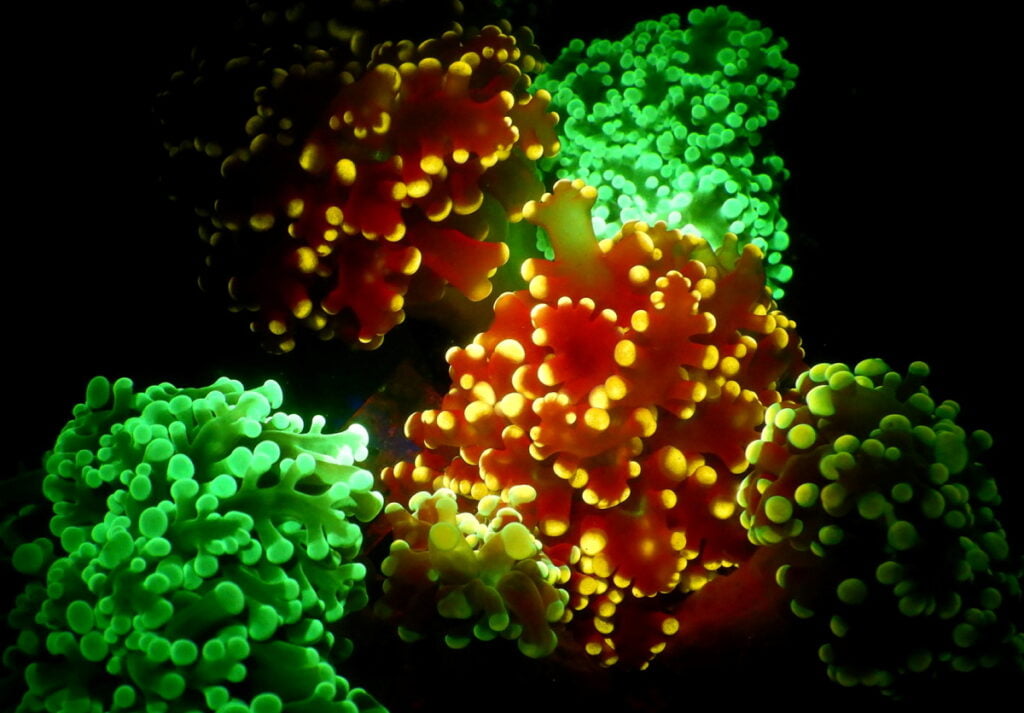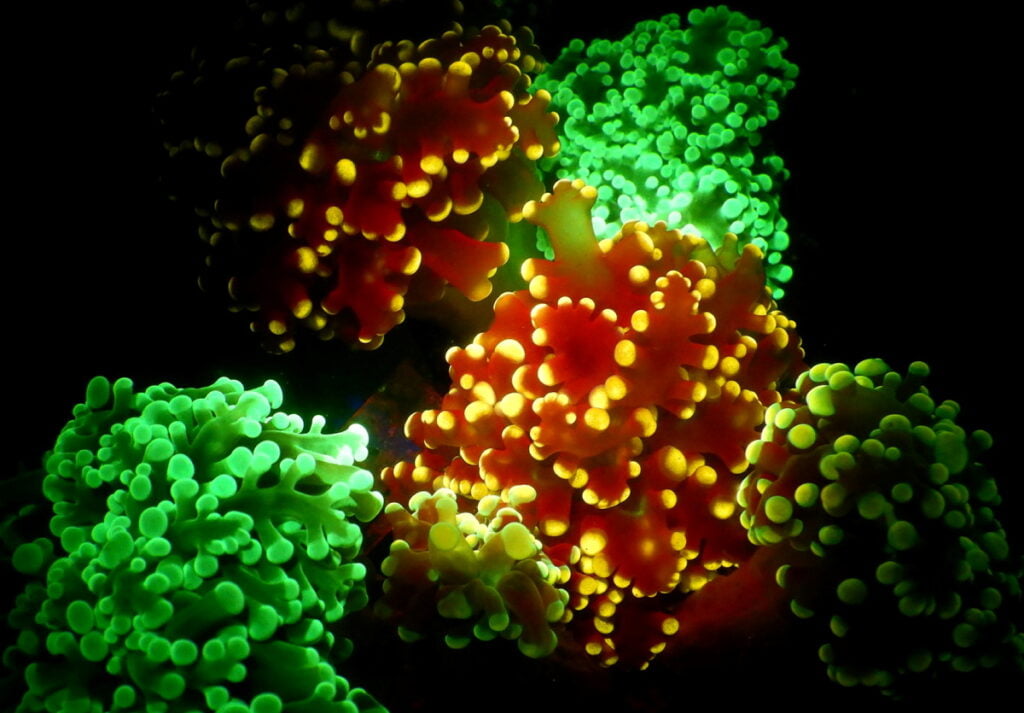It’s to attract tiny plankton as a snack, says Tel Aviv University team
Researchers believe they may have finally resolved an age-old mystery: Why do corals glow in the dark?
The answer, according to a team at Tel Aviv University (TAU), is that they want to lure plankton, the microscopic sea life on which they feed, as prey.
Corals may appear inanimate, rooted as they are to the ocean floor, but they are very much alive. They are marine invertebrates, the same family as jellyfish, and they need food.


They have long been a species of interest for marine biologists, especially during a period of global climate crisis in which ocean acidification poses a major threat to coral reefs.
Scientists have long debated the purpose of coral fluorescence. Was it a way for the species to protect itself against radiation? Or to optimize photosynthesis in dark oceanic areas deep below the surface of the sea? Maybe the glowing allowed corals to bolster antioxidant activity or protect themselves against herbivores?
“Before I started working on this project, I tested other hypotheses and nothing worked. It was failure after failure,” Dr. Or Ben-Zvi, who led the research team, tells NoCamels. “I did publish that work, though, because I believe it is important for others to know not to make the same mistakes.
“Then, I dove into the mesophotic corals, those that reside in the depths of the ocean. And the fluorescence is very obvious there. But corals don’t have eyes, so you start thinking, what else can it be? It’s very visual, you can see it with the human naked eye. And it is very appealing. As a diver, you see it and want to come close to it. It started from there.”
Ben-Zvi and her team set about testing plankton’s attraction to fluorescence in the lab and tracked positive results, suggesting the prey were driven to the glowing colors.
In the ocean, she continued to see positive results, as she tested two differently-colored fluorescent species and studied plankton attraction and activity of other non-prey animals, like fish.

Diving 40 meters deep, twice daily, Ben-Zvi saw plankton still attracted to the glowing corals while other species did not show these trends. “Every time, the results were as I expected. It was very rewarding to get those results,” she says.
Sign up for our free weekly newsletter
Subscribe“The entire project is on mesophotic ecosystems and mesophotic coral. Those systems are very underexplored and we don’t know much about them. So this project gives us new opportunities to find out new things. We now know more about their physiology, their nutrition, and why they look the way they do,” Ben-Zvi explains.
“Fluorescence, in general, was such a mystery for so many years. For dozens of years, people have been trying to figure it out and no one has found direct evidence for a hypothesis. Our research is a very straightforward project with very straightforward results.”
“In the broader sense, fluorescence is a very powerful tool in biology – in any field of biology, like cancer and neurobiology – and scientists are using these proteins but nobody knows their origins.”

Her team’s work, in collaboration with the Steinhardt Museum of Natural History, in Tel Aviv, and the Interuniversity Institute for Marine Sciences in Eilat, was published last month in Nature.
Ben-Zvi led the project under the supervision of Prof. Yossi Loya from the School of Zoology and the Steinhardt Museum. She hopes to continue to delve into work in marine biology. As a diver, she has seen the deterioration of coral reefs amidst the global climate crisis and hopes to better understand the species before it is too late.
“I am in the water all the time. I have been tracking what is happening in the Gulf of Eilat and other reefs all over the world, in Japan and Hawaii. You see the destruction. We are trying to know as much as we can about corals, in general, and even more about corals in deeper habitats,” Ben-Zvi says.
“We have hope that even if climate change affects a lot, we hope some of the mesophotic corals are more protected.”
Ultimately, Ben-Zvi, currently pursuing postdoctoral studies at Scripps College in San Diego, California, USA, hopes to continue to learn about marine activity and the coral bleaching crisis currently impacting the oceans.
“There is an underwater microscope that can see the symbiotic algae that live inside the corals. So we hope to learn more about the interaction between corals and their algae and photosynthesis, and how it is all affected by the climate changes,” she said.
Related posts

Israeli Medical Technologies That Could Change The World

Harnessing Our Own Bodies For Side Effect-Free Weight Loss

Missing Protein Could Unlock Treatment For Aggressive Lung Cancer




Facebook comments